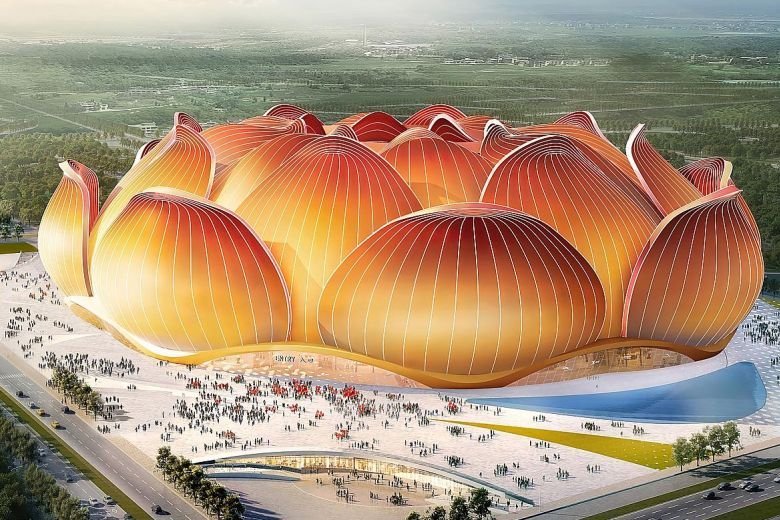The Largest Football Stadiums in the World

Football stadiums are more than just architectural marvels — they are symbols of national pride, homes to unforgettable moments, and cathedrals of global sport. In this article, we explore the biggest football stadiums in the world by seating capacity, highlighting their history, atmosphere, and importance to the beautiful game.
What Defines a “Big” Football Stadium?
A stadium’s size is typically measured by official seating capacity, not including standing room. While some stadiums host various events, this list focuses on venues primarily used for football (soccer). We consider:
- Maximum seating capacity
- Primary usage (football-focused)
- Cultural and sporting significance
List of the Largest Football Stadiums in the World
Rungrado 1st of May Stadium – Pyongyang, North Korea
Capacity: 114,000
The Rungrado 1st of May Stadium is the largest football stadium in the world by capacity. Located in Pyongyang, this massive venue opened in 1989 and serves multiple purposes, including football, athletics, and national parades.
Despite its rare usage for international matches, its size and design — featuring 16 arches resembling a magnolia blossom — make it a true spectacle. It has hosted the North Korean national team and significant political events, symbolizing national strength and unity.
Michigan Stadium – Ann Arbor, United States
Capacity: 107,601
Nicknamed “The Big House,” this stadium primarily serves American football but has hosted international soccer friendlies and ICC matches. Located in Michigan, USA, it’s occasionally transformed into a football (soccer) venue, attracting massive crowds for games like Real Madrid vs. Manchester United.
Its inclusion is based on capacity and adaptability, though it’s not a dedicated football stadium year-round.
Melbourne Cricket Ground (MCG) – Melbourne, Australia
Capacity: 100,024
The MCG is one of the world’s most iconic sports arenas. Although built for cricket, it has hosted major football events, including matches during the 1956 Olympics and the 2015 AFC Asian Cup.
Its multi-sport versatility and impressive capacity make it a favorite for international friendlies and large tournaments in Australia. Experience the thrill of sports betting and live matches like never before with 1xBet Somalia — your gateway to world-class odds, exciting casino games, and seamless mobile access tailored for Somali users.
Camp Nou – Barcelona, Spain
Capacity: 99,354
Camp Nou is the biggest football-specific stadium in Europe and home to FC Barcelona. Opened in 1957, it has hosted Champions League finals, World Cup matches, and El Clásico showdowns.
Famed for its electrifying atmosphere and architectural presence, Camp Nou is undergoing renovation under the Espai Barça project, which will enhance fan experience and sustainability.
FNB Stadium (Soccer City) – Johannesburg, South Africa
Capacity: 94,736
The FNB Stadium, also known as Soccer City, gained international fame as the venue for the 2010 FIFA World Cup final between Spain and the Netherlands. Its calabash-inspired design reflects African culture and unity.
Besides football, it hosts concerts, political events, and rugby, making it a versatile landmark in African sport.
Rose Bowl – Pasadena, United States
Capacity: 92,542
Though primarily used for American football, the Rose Bowl is historically significant in football history. It was one of the key venues during the 1994 FIFA World Cup and the 1999 FIFA Women’s World Cup.
With its open-bowl design and picturesque setting, it’s a favorite for big-name friendlies and international tournaments in the U.S.
Wembley Stadium – London, England
Capacity: 90,000
Wembley is the spiritual home of English football. Rebuilt in 2007, the new Wembley hosts the FA Cup Final, UEFA competitions, England national team matches, and major concerts.
Its iconic arch has replaced the old twin towers but retains the prestige of one of football’s most cherished grounds. Wembley has hosted the UEFA Euro 2020 Final and will co-host UEFA Euro 2028.
🇲🇽 Estadio Azteca – Mexico City, Mexico
Capacity: 87,523
Estadio Azteca is the only stadium to have hosted two FIFA World Cup finals — 1970 and 1986. It witnessed Pelé’s triumph and Maradona’s “Hand of God.”
Known for its high altitude and intimidating atmosphere, Azteca is home to Club América and the Mexican national team, and it’s set to host matches during the 2026 World Cup.
🇮🇷 Azadi Stadium – Tehran, Iran
Capacity: 78,116
The Azadi Stadium is the beating heart of Iranian football. Built in 1971, it hosts Iran’s national team and Tehran’s fierce club rivalries like Persepolis vs. Esteghlal.
Despite restrictions on crowd attendance at times, it remains one of the loudest and most passionate football venues in Asia.
🇪🇸 Santiago Bernabéu – Madrid, Spain
Capacity: 81,044 (post-renovation)
Home of Real Madrid, the Bernabéu is undergoing a futuristic transformation that will make it one of the most technologically advanced stadiums in the world.
It has hosted multiple Champions League finals and El Clásico matches, contributing significantly to football’s rich global history.
Comparison Table: Largest Football Stadiums by Capacity
| Stadium | Location | Capacity | Main Club/National Use |
| Rungrado 1st of May | Pyongyang, North Korea | 114,000 | North Korea National Team |
| Michigan Stadium | Ann Arbor, USA | 107,601 | Multi-purpose |
| Melbourne Cricket Ground | Melbourne, Australia | 100,024 | Occasional football matches |
| Camp Nou | Barcelona, Spain | 99,354 | FC Barcelona |
| FNB Stadium (Soccer City) | Johannesburg, S. Africa | 94,736 | Kaizer Chiefs, SA National |
| Rose Bowl | Pasadena, USA | 92,542 | Occasional international |
| Wembley Stadium | London, England | 90,000 | England National Team |
| Estadio Azteca | Mexico City, Mexico | 87,523 | Club América, Mexico NT |
| Santiago Bernabéu | Madrid, Spain | 81,044 | Real Madrid |
| Azadi Stadium | Tehran, Iran | 78,116 | Iran National Team |
Conclusion: Cathedrals of the Global Game
From the thunderous chants of Camp Nou to the sleek, modern upgrades at Santiago Bernabéu, football’s largest stadiums represent the sport’s global scale and deep cultural impact. More than just concrete and steel, these venues are theatres of passion, rivalry, and unforgettable moments.
Across Europe, Asia, Africa, and the Americas, these iconic grounds have witnessed everything from historic finals to grassroots dreams. They unite millions of fans, crossing borders and generations, creating a shared space where football becomes more than a game — it becomes a global language.
As technology and design reshape the future of stadiums, their essence remains the same: to bring people together and celebrate the magic of the sport. These great arenas will continue to echo with the chants of fans and the legacy of legends — standing tall as the beating hearts of world football.
Article updated 1 month ago ago. Content is written and modified by multiple authors.









